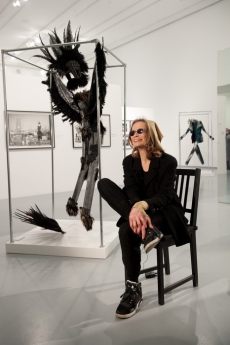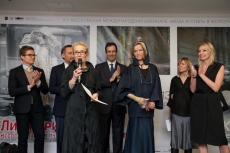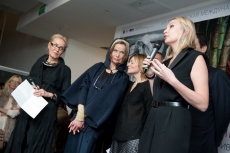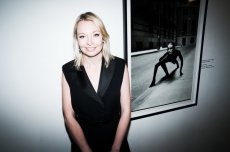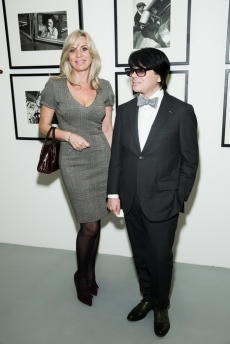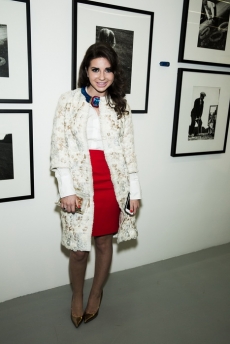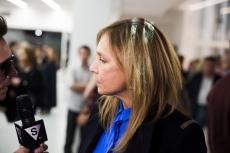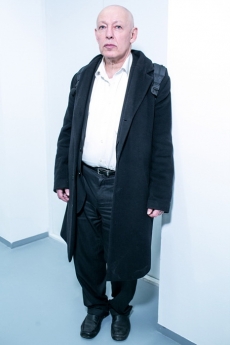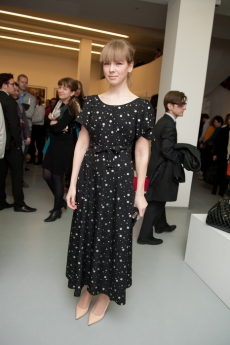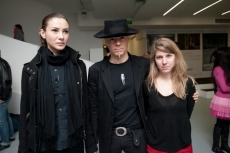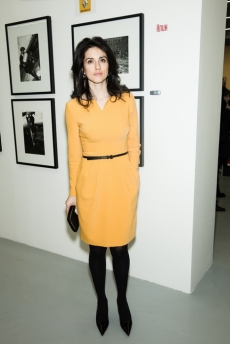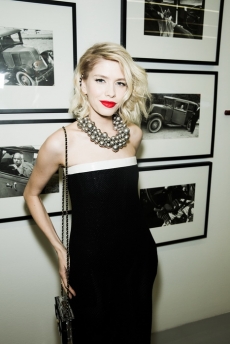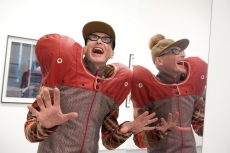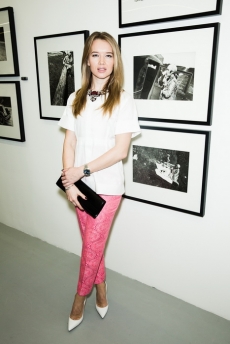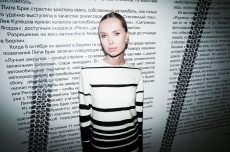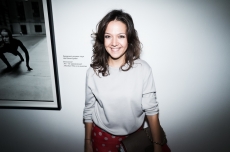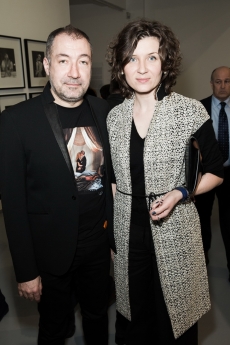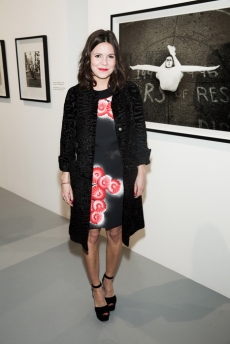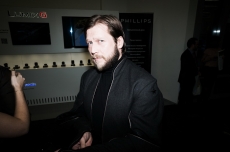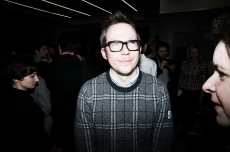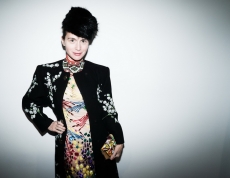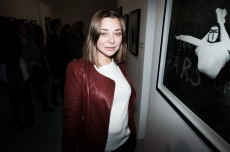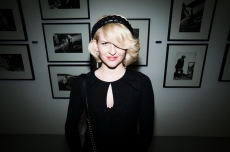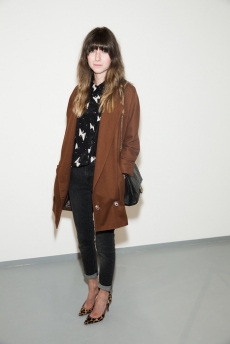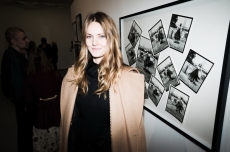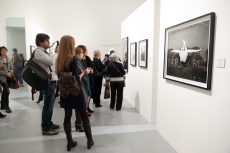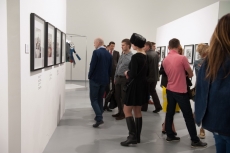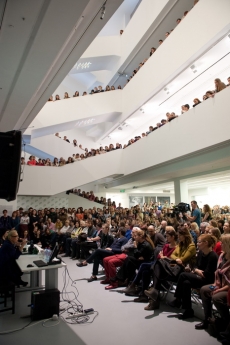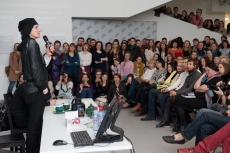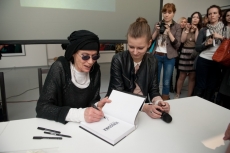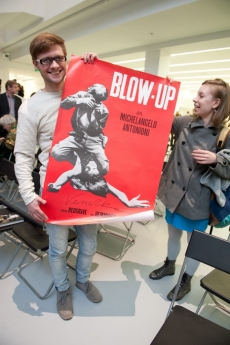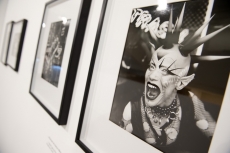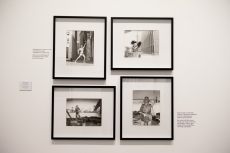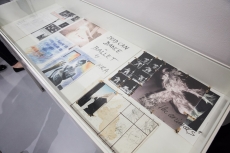Self-Portraits. New York. 1994 - 1998

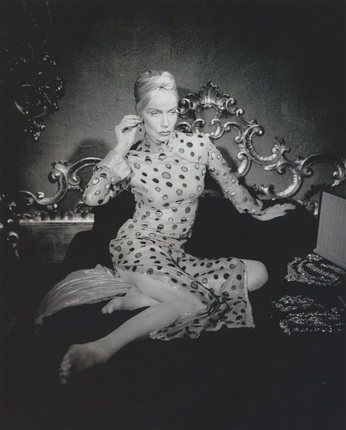

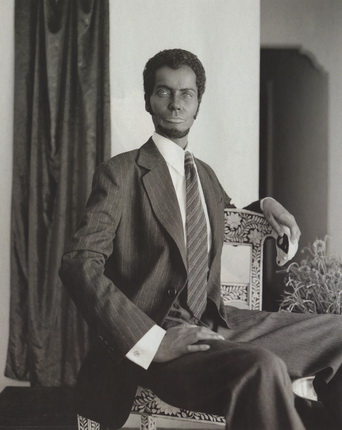
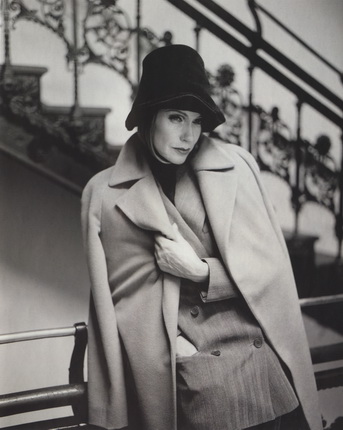

Wall Street Spider. 1994-1998. Performance: Vera Lehndorff. Dress: Property of Vera Lehndorff. Photographer: Andreas Hubertus Ilse. Hand-printed photograph on baryta paper. Courtesy of the artists
Marlene. 1994-1998. Performance: Vera Lehndorff. Outfits: Donna Karan, New York, special made, Sybilla Pavenstedt, special made, copies of Marlene Dietrich’s original jewelry. Photographer: Andreas Hubertus Ilse. Hand-printed photograph on baryta paper. Courtesy of the artists
Street Performance artist. 1994-1998. Performance: Vera Lehndorff. White stretch suite: Zia Ziprin, New York, special made Snake-outfit: Property of Vera Lehndorff. She wears it as well in the party-scene of "Blow-up". Photographer: Andreas Hubertus Ilse. Hand-printed photograph on baryta paper. Courtesy of the artists
President and his wife (part). 1994-1998. Performance: Vera Lehndorff. Man’s suite: Property of Vera Lehndorff. Photographer: Andreas Hubertus Ilse. Hand-printed photograph on baryta paper. Courtesy of the artists
Garbo. 1994-1998. Performance: Vera Lehndorff. Coat: Azzedine Alaia, Paris. This coat was made specially for Greta Garbo, but she never picked it up from the atelier. Photographer: Andreas Hubertus Ilse. Hand-printed photograph on baryta paper. Courtesy of the artists
Famous French writer. 1994-1998. Performance: Vera Lehndorff. Female dress: Susanne Lucas, Germany, special made. Photographer: Andreas Hubertus Ilse. Hand-printed photograph on baryta paper. Courtesy of the artists
Moscow, 9.04.2013—5.05.2013
exhibition is over
Share with friends
Concept and image: Vera Lehndorff
Photographer: Andreas Hubertus Ilse
For the press
Veruschka is a name that, without exaggeration, determined the course of world fashion in the mid-20th century. Tall, imposing, with Nordic restraint, she was entirely different from models of the previous generation who resembled ‘dressed-up housewives’. It was as if time and fashion adapted to her, accepted her will and her concept of true beauty, which bestowed extraordinary freedom of action. Thanks to Veruschka, the whole structure of internal relations within the fashion world was turned upside-down: between photographer, model, editor and stylist. At one time or another they all followed Vera’s creative energy, yielded to and captured the images she invented, and the scale of those fashion shoots from the Diana Vreeland era of American Vogue were reminiscent of a world recreated and reimagined, with a single heroine who constantly metamorphosed, assuming diverse images, transforming her surroundings, and on each occasion the shoot became a serious artistic experiment rather than an expenditure of advertising budgets. Consistently destroying the notion of the model as a mute and detached mannequin, she infiltrated the essence of fashion to such an extent that both she and her epoch became legendary.
After departing from the world of fashion in the late 1970s, which by that time seemed weary of the radical experiments and fruits of sexual and intellectual emancipation, Vera Lehndorff found herself in the artistic context most congenial to her, and naturally continued with the series of transformations and experiments with her own physique that made Veruschka the model famous. The primary medium was her own body with its extraordinary capacity for plastic movement, like the organism of a superhuman or ideal being which could inexplicably overcome gravity and bipedalism, whose proportions were ostensibly destined for another, more perfect space.
As distinct from Cindy Sherman’s transfigurations, for example, from the start Vera Lehndorff placed herself and her body in one or another specific setting. All her transformations have an aura of sensuality, and she unwittingly draws the surrounding space into an act of artistic travesty, investing it with new properties. Her numerous incarnations are like an expression of the existential angst or inner conflict that decides the artist’s chosen path. Vera Lehndorff is not fascinated by a play on popular myths, like Sherman, since for many years she was drawn into the real-life whirl of events and images that constitute the mass concept of beauty, and from the outset it was something else that interested her. For Lehndorff physical appearance became a reference point of this spatial anxiety; each time she apparently attempted self-realisation, using her body to define and consolidate something transitory, fragile and perishable. As in the celebrated Transfigurations series (Vera Lehndorff/Holger Trülzsch), a configuration is applied to the naked form that, like part of a jigsaw puzzle, matches a crumbling wall, a broken window frame or heap of clothing. She never ceases her search for cover; like a strange insect she penetrates material close to disintegration, securing and strengthening it with her body.
In the Self-Portraits series exhibited at MAMM Lehndorff complicates her task while maintaining her former, hypersensitive relations with space. It is no coincidence that the series is sub-headed ‘New York’: this is not a conditionally designated dot on the world map, but an actual city that Lehndorff knows, feeling its energy, and the whole complex character structure — where there are fictional and real heroes — is united by topos. This appears to be the first series by Vera Lehndorff in which we have such a distinct feeling of the thirst for a storyline, or more precisely, a special kind of narration — Lehndorff tells stories, hints at their beginning and continuation, often interrupting them, leading to the ultimate absurdity; she makes an irony of the spectator’s expectations, leads us down a blind alley, meanwhile revealing the ineffectuality of stereotypes created by glossy magazines, public opinion, good taste, etc. The integrity of the series provides a unique cinematographic quality, and we are confronted by something akin to a sequence of cinema frames, a reel of montage shots skilfully manipulated by Lehndorff. These Self-Portraits were collected not by an artist, but by a competent artistic director who controls numerous storylines, and the geometric structure of the shot. Metamorphosing into Garbo, Marlene, a space alien, a dog outside the White House, a zebra in Central Park, a punk, a fashion victim — it seems that Vera Lehndorff achieves complete physical and plastic perfection in mastery of her own body, an artistic medium that, as in her ‘model epoch’, remains as sensuous as ever, close to our concept of an ideal being.
Ekaterina Inozemtseva



